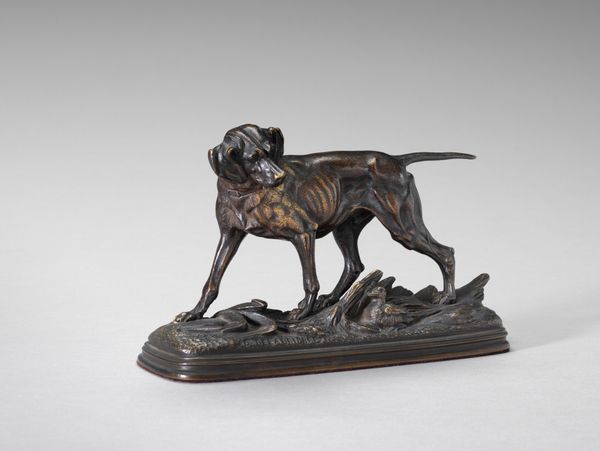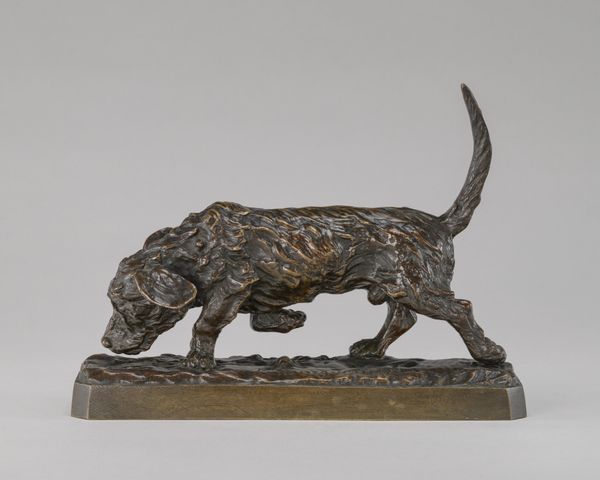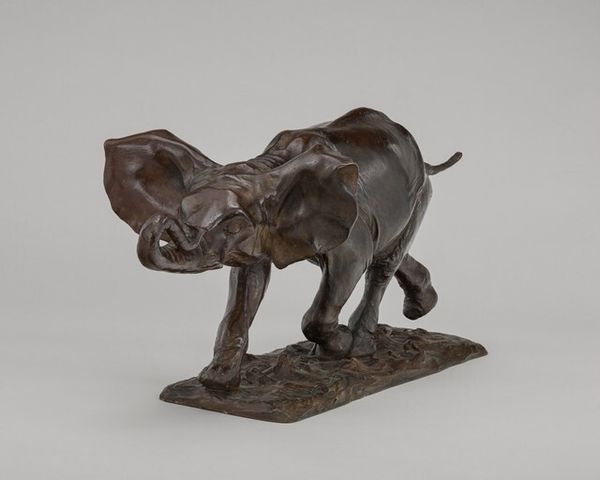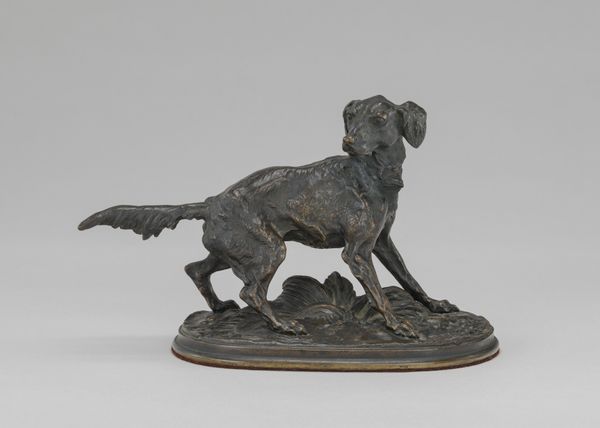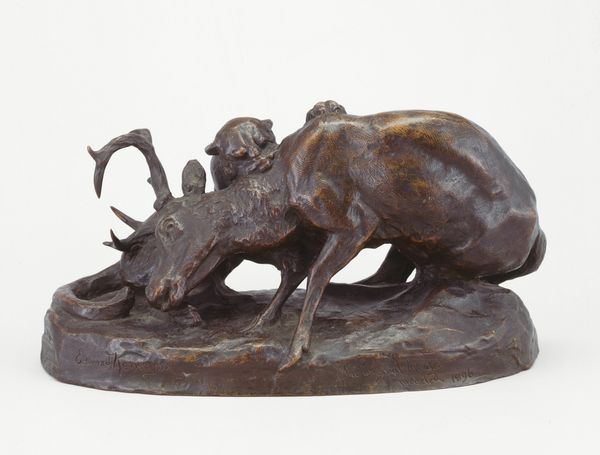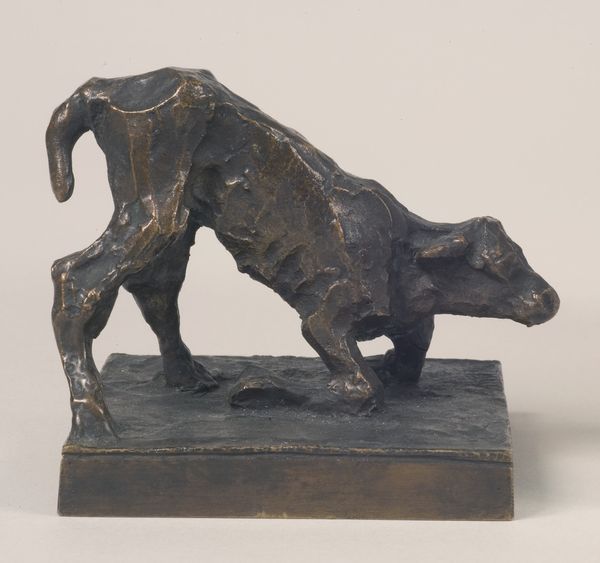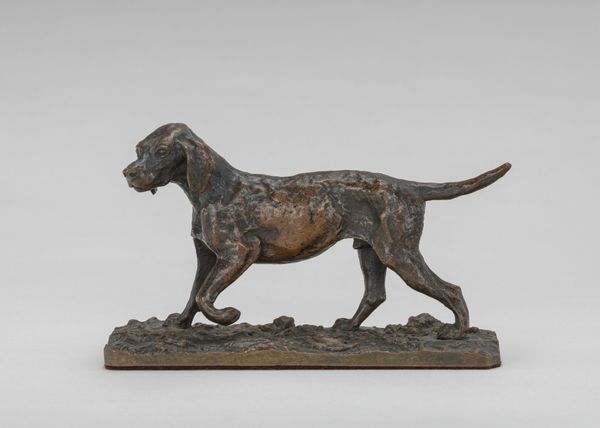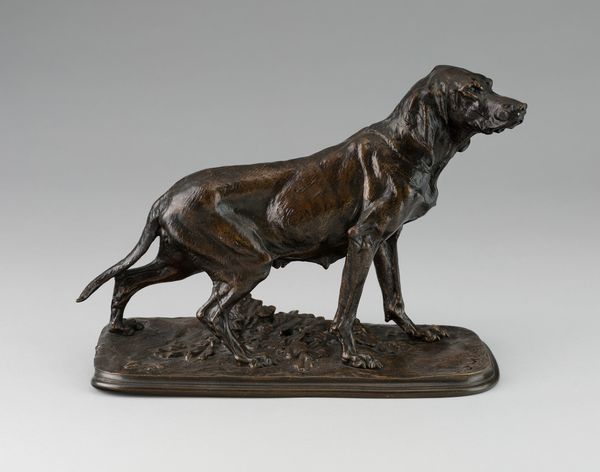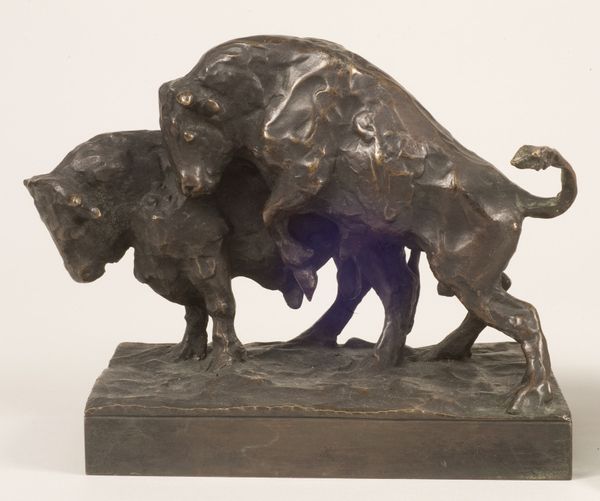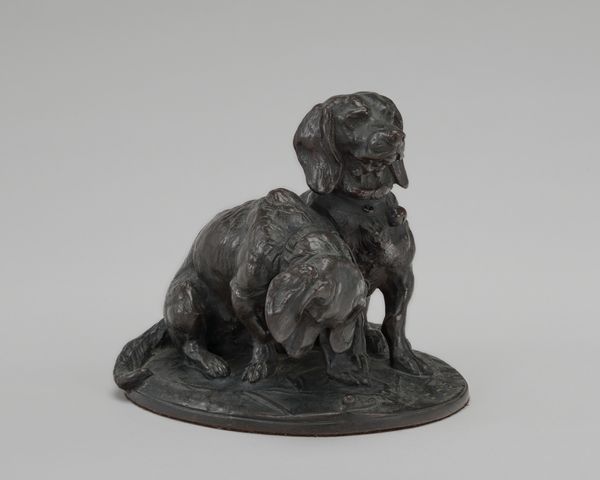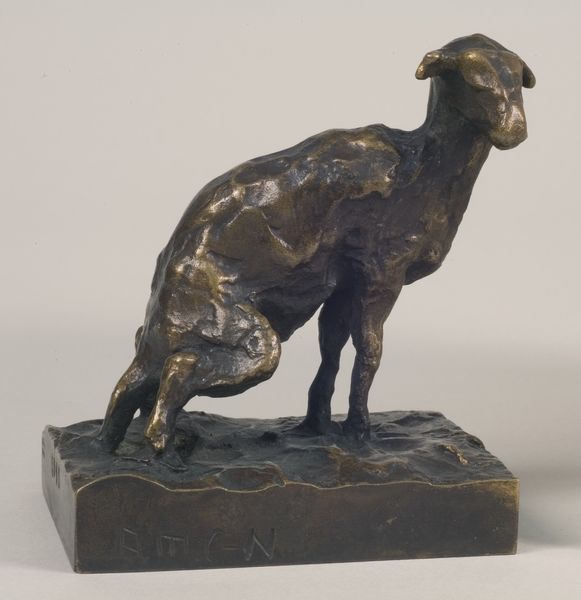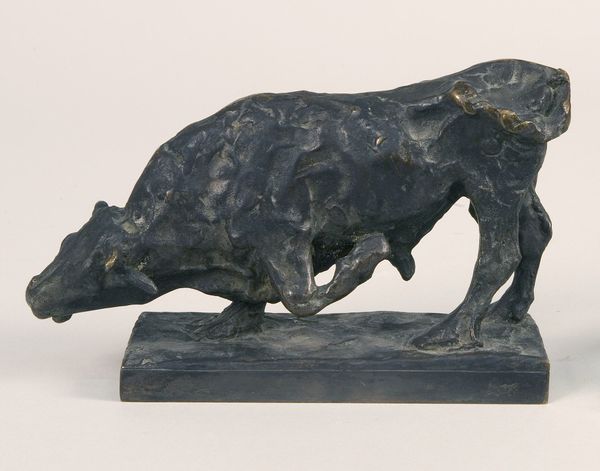
Dimensions: overall: 10.8 × 22.2 × 9.5 cm (4 1/4 × 8 3/4 × 3 3/4 in.)
Copyright: National Gallery of Art: CC0 1.0
Editor: This is Pierre-Jules Mêne's bronze sculpture, "Pointer," created around the 1860s. The way the dog is positioned, so alert and focused, it's captivating. What historical context shaped a piece like this? Curator: Certainly. Mêne lived during a period when representing animals with scientific accuracy became increasingly important. Did his audience find in these realistic yet idealized depictions of animals some understanding of the place of animals in society and industry? How might its original setting, presumably in a domestic space, inflect how it would be viewed by the landed gentry or the rising middle classes? Editor: So, it's less about just showing a dog, and more about…showing a specific view of society? Curator: Exactly. Think about the role of hunting in 19th century Europe, the rise of leisure, and the importance of dogs in that social fabric. Mêne was exceptionally skilled at capturing movement and detail, appealing to an audience that sought both artistry and a reflection of their world, maybe even validation of their way of life. Editor: That makes so much more sense. So, its value might stem from how it captured or perpetuated certain societal views? Curator: Precisely! And even perpetuated a sense of national or cultural pride in a rural idyll. Do you think that the sculpture still resonates today because we’ve adopted some of those values or have radically reconsidered them? Editor: I never considered the social aspect so directly. This makes me think differently about what was going on behind the artist's choices. Curator: And that interplay between the artist, artwork, and society is where much of the meaning resides, inviting reflection across the centuries.
Comments
No comments
Be the first to comment and join the conversation on the ultimate creative platform.
